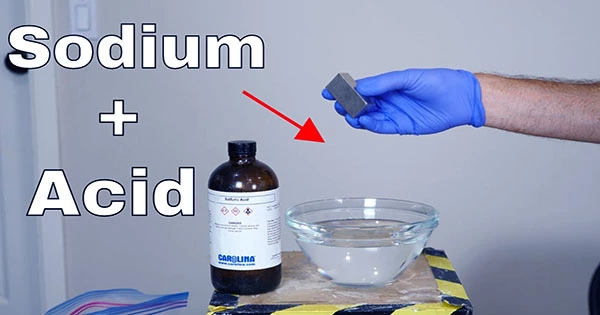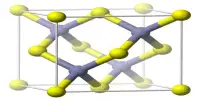In film, dramatic representations of acid-dissolving bodies are common, but the exact identity of the caustic fluids is frequently left ambiguous, raising the question: are they real? There are acids that can dissolve flesh (see how some dissolve a chicken leg here), but there is also an elite group of burny-bad-time liquids known as superacids. Superacids are acids that are stronger than 100 percent sulfuric acid, such as fluoroantimonic acid, the world’s strongest acid. They’re often created by mixing two strong acids, one of which contains the hyper reactive element fluorine, to produce a very acidic molecule that likes to give away protons.
FLUOROANTIMONIC ACID: WHAT IS IT? The Boss of superacids, fluoroantimonic acid, is a mixture of hydrogen fluoride (HF) and antimony pentafluoride. According to The Royal Society of Chemistry, the superacid known as “magic acid” (composed of fluorosulfuric acid and antimony pentafluoride) has 100 billion times the strength of 100 percent sulfuric acid, giving it the moniker of “superacid.” What is the strength of fluoroantimonic acid? It’s 100,000 times more powerful than magic acid and 10 quadrillion times more powerful than pure sulfuric acid. If keeping track of all those zeros is becoming challenging, perhaps this video of chicken being drenched in fluoroantimonic acid will help put everything in perspective.
IS IT POSSIBLE FOR FLUOROANTIMONIC ACID TO DISSOLVE ANYTHING? Acid strength (defined as the capacity of an acid to transfer protons to other molecules) isn’t necessarily a reliable indicator of corrosiveness. Magic acid got its name because a candle was dipped in it and swiftly disintegrated, which was considered to be impossible due to the hydrocarbons in candle wax being such stable chemicals.
In this video from Chemical Force, fluoroantimonic acid, which can transfer protons to methane, causes no damage to a birthday candle. With a Hammett acidity function of -28, it’s nevertheless rather corrosive, capable of eating through glass, which is why it has to be kept in the synthetic fluoropolymer Polytetrafluoroethylene (PTFE), better known as Teflon. While Teflon may not appear to be much, it includes some of organic chemistry’s hardest linkages (C-F bonds), making it a good custodian of fluoroantimonic acid. If the bath tub scene from Breaking Bad taught us anything, it’s that ignoring an acid’s storage instructions may lead to disaster.
WHAT IS THE PURPOSE OF FLUOROANTIMONIC ACID? Fluoroantimonic acid is a useful tool in chemical engineering and organic chemistry because of its extreme character. According to ThoughtCo. Its proclivity for releasing protons, like Oprah, allows it to remove chemicals attached to difficult solvents, like as methane from neopentane. While TikTok loves to make a controversy out of everything, from producing chlorine gas in a toilet to doing unsafe things with avocados, fluoroantimonic acid is something you should avoid at all costs.














